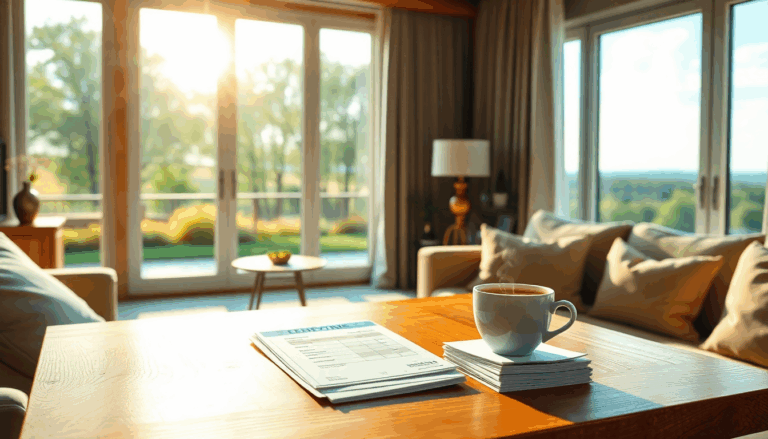Imagine stepping into your second home, a serene retreat away from the hustle and bustle, only to be greeted by the shocking revelation of soaring energy bills. Yes, it’s a reality that many second homeowners face—one that can turn a tranquil getaway into a financial burden. In this elegant
exploration, we delve into the nuances of managing electricity costs at your secondary abode, transforming the mundane task of bill management into an art form. Get ready to unveil the secrets to a more economical lifestyle while basking in the luxury of your own sanctuary.
Understanding the costs
Activating power in a second home can be a perplexing challenge, especially for non-residents who often encounter higher fixed charges compared to primary residences. Even if your
getaway is a weekend retreat or a seasonal escape, the utility bill doesn’t lie—system fees and fixed charges arrive like uninvited guests. The truth is, vacationing shouldn’t come with a hefty price tag.
Before you embark on your savings journey, it’s vital to grasp that fixed costs can easily surpass €100 annually, even during months of inactivity. Therefore, if optimizing expenses is on your agenda, opting for tailored energy offers aimed at occasional
users is a smart move. These plans promise flexibility, online management, and no strings attached, much like a carefree weekend getaway.
Power consumption insights
When it comes to utility bills, knowledge is, indeed, power. Understanding that second homes classified as non-residential accounts face elevated charges and fewer benefits is crucial. Thankfully, there are tariffs designed specifically for those who only use their properties sporadically. Want to know how to navigate this maze? Consider keeping your contracted power to a minimum—around 3 kW is ideal. This way, even if you switch on just a couple of light bulbs, you’ll avoid a heart-stopping bill.
Moreover, it’s essential to be aware that system fees for non-residential accounts are typically higher than those for primary residences. Hence, before activating power at your second home, carefully evaluate the available options. For those who juggle between brief stays and weekends, selecting a supplier with lower fixed costs can mean the difference between a manageable bill and a budget-busting shock.
Activation process demystified
If your second home has been dormant for a while, understanding the steps to activate the meter is essential. If the property already has a meter but the supply has been discontinued, you’ll need to request a reactivation. However, if the house has never been connected to the electrical grid, prepare for an initial activation that includes meter installation. In a sense, it’s akin to hosting an electrician for a housewarming celebration!
Don’t forget to inform your energy supplier that you’re dealing with a non-residential account. This small detail can help you sidestep unexpected surprises on your bill. Regarding timelines, activation generally occurs within seven business days, whereas a first-time activation can take up to ten days. So, if a long weekend is on your horizon, planning ahead is crucial—much like packing your suitcase!
Decoding fixed costs
Ah, the fixed costs! That line item on your bill that seems to have a life of its own. They typically fall into three main categories: the cost for contracted power, system fees, and taxes. And don’t be fooled; even if your second home is used sparingly, these costs will persist like an overly enthusiastic friend. The expense for contracted power relates to the kW demanded, and for those who only occasionally enjoy their residence, minimizing this is advisable.
Lastly, let’s not overlook taxes. Even during periods of limited use, VAT and other fixed fees will always be lurking in the background. So, if your second home is a seasonal retreat, consider the possibility of temporarily deactivating the supply. It’s a bit like shutting down your computer for a coffee break!
Finding the right tariff
As we look ahead to 2025, several suppliers are rolling out tariffs specifically designed for second homes, featuring lower fixed costs and advantageous conditions for low consumption. It’s akin to finding the perfect dress on sale! The ideal tariffs emphasize flexibility and savings, allowing you to tailor your expenses to the actual needs of your property. Who doesn’t love a good deal?
To truly optimize your energy bill, consider the time-of-use pricing. Knowing when it’s most economical to use energy can significantly lessen your expenses. Isn’t that delightful? And remember, you can register the bills even without having residency at the property, so it’s never too late to start saving!
In sum, managing the electricity bill for your second home might seem daunting, but with the right information and a touch of planning, it’s entirely possible to reduce expenses and relish your personal paradise without worry. Remember, every small measure counts, allowing you to tackle energy costs with a smile. Who knows, you might even discover that saving is your new favorite pastime!

